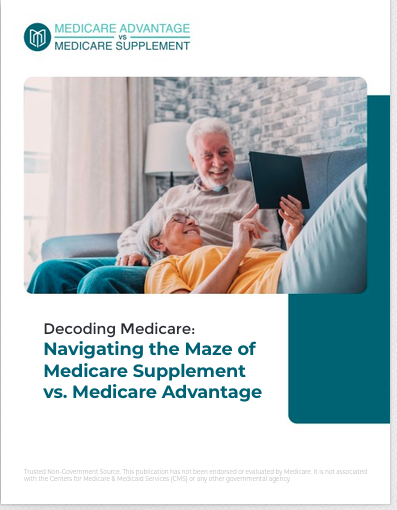Key Takeaways
-
In 2025, Medicare Part D has changed significantly, including a $2,000 cap on annual out-of-pocket prescription drug costs.
-
While the plan offers broader financial protection, not everyone may benefit equally, and it’s worth evaluating whether Part D still fits your prescription needs.
What Medicare Part D Covers in 2025
Medicare Part D remains the primary source of prescription drug coverage for those enrolled in Original Medicare. Administered through private plans approved by Medicare, it helps you afford outpatient medications.
Here’s what Part D typically covers:
-
Prescription drugs: Both brand-name and generic drugs.
-
Formulary categories: Covered medications are grouped into tiers that impact your cost-sharing.
-
Standard coverage phases: Deductible, initial coverage, catastrophic coverage.
As of 2025, the Part D landscape includes some major improvements, particularly a new out-of-pocket cap that could change how you approach your yearly drug expenses.
2025 Changes That Could Affect Your Costs
The year 2025 brings one of the most notable reforms to Medicare Part D since its inception. If you’ve used this benefit in the past, it’s important to understand how it works now.
1. $2,000 Out-of-Pocket Maximum
One of the most welcome updates in 2025 is the introduction of a $2,000 cap on your out-of-pocket spending for covered prescription drugs. After reaching this threshold, you pay nothing more for the rest of the calendar year.
This change eliminates the need to navigate the old coverage gap, previously referred to as the “donut hole,” and brings predictability to your budget.
2. The Medicare Prescription Payment Plan
Another new feature in 2025 is the ability to spread your out-of-pocket costs over the year. If you take expensive medications, this option helps you avoid large bills in the first few months.
You can opt into this plan at the beginning of the year or when your costs hit a certain point. This doesn’t change the total you pay—just how you pay it.
3. Simplified Coverage Phases
Previously, Part D included four complex stages:
-
Deductible phase
-
Initial coverage
-
Coverage gap
-
Catastrophic coverage
Now in 2025, these stages are more streamlined:
-
Deductible phase (up to $590)
-
Initial coverage (up to the $2,000 limit)
-
Post-cap phase, where you pay $0 for covered drugs
This simplification makes it easier to understand how much you’ll pay and when.
Who Benefits the Most from Part D in 2025
While every Medicare beneficiary can enroll in Part D, not everyone will benefit equally. Here’s who may find it especially valuable in 2025:
-
People with chronic conditions who take multiple or expensive medications year-round.
-
Those without creditable drug coverage through other means, like a retiree plan.
-
Low-income beneficiaries who qualify for Extra Help and may pay little to no cost sharing.
If your medication costs are moderate to high, Part D’s new $2,000 cap can save you a significant amount over time.
When Part D Might Not Be Your Best Option
Even with improvements, Part D may not be ideal for every situation. Here are a few cases where it might not be the best fit:
-
You take very few or no medications: You may pay premiums and not use the coverage much.
-
You have drug coverage through another source, such as VA benefits, union coverage, or a former employer.
-
Your prescriptions aren’t on the formulary of available Part D plans in your area.
In those situations, looking elsewhere for drug coverage—or delaying enrollment if you have creditable coverage—might be more cost-effective.
Timing Is Everything: Enrollment Periods You Should Know
Part D enrollment follows specific Medicare timelines. Missing these windows could cost you more or delay your coverage.
Initial Enrollment Period (IEP)
-
Starts 3 months before you turn 65
-
Ends 3 months after your birthday month
This is your first opportunity to sign up for Medicare and avoid late penalties.
Annual Enrollment Period (AEP)
-
Runs from October 15 to December 7 every year
During this time, you can switch Part D plans or add coverage if you didn’t enroll earlier.
Special Enrollment Periods (SEPs)
These apply if you lose other creditable drug coverage or move out of your plan’s service area.
You’ll generally have 2 months from the date of the qualifying event to enroll in a Part D plan without penalty.
Understanding Late Enrollment Penalties
If you delay signing up for Part D and don’t have other creditable drug coverage, you may face a penalty. This penalty is permanent and added to your monthly premium for as long as you have the coverage.
The penalty is calculated based on the number of months you went without coverage after becoming eligible. Even with improvements in 2025, this rule remains in effect.
Part D vs. Other Sources of Drug Coverage
To decide whether Part D is worth it in 2025, it helps to compare it to other drug coverage options available to Medicare beneficiaries.
Other Common Drug Coverage Sources:
-
Medicare Advantage plans with drug coverage (also known as MAPDs)
-
Employer or union retiree plans
-
TRICARE for Life (for military retirees)
-
VA drug coverage
These alternatives can offer comprehensive benefits or lower costs, but availability and eligibility vary. Be sure any alternative meets Medicare’s standard for creditable coverage to avoid penalties.
How to Evaluate Part D for Your Needs
Here are key points to consider when deciding whether to keep or enroll in Part D this year:
-
Current medications: Are they covered by plans in your area?
-
Expected usage: Will you likely hit the $2,000 out-of-pocket cap?
-
Total cost: Consider premiums, deductibles, and co-pays.
-
Provider network: Are your preferred pharmacies in the network?
-
Convenience: Do you prefer local pharmacies or mail-order options?
Use Medicare’s official Plan Finder tool or work with a licensed agent to compare available options in your ZIP code.
Planning Ahead: How to Make the Most of Your Coverage
Maximizing your Part D plan requires active management throughout the year:
-
Review your Annual Notice of Change (ANOC) in the fall to see if your plan is changing.
-
Use preferred pharmacies to lower copays.
-
Request generic alternatives when available.
-
Track your out-of-pocket costs to know when you’ll hit the cap.
Being proactive can help you avoid surprise expenses and ensure your plan continues to work well for you.
What You Give Up by Skipping Part D
Skipping Part D entirely—especially without other drug coverage—can have lasting consequences:
-
Permanent late penalties
-
Higher out-of-pocket costs for prescriptions
-
Limited coverage if you develop health issues later
Even if you’re not taking medications now, enrolling in a low-cost plan can act as a safety net against unexpected needs.
Making Sense of Part D in 2025
While Medicare Part D has seen meaningful upgrades in 2025, it still may not be a one-size-fits-all solution. The $2,000 out-of-pocket cap and payment flexibility make it more predictable, but whether it’s worth it for you depends on your health, financial situation, and what alternative coverage options you might have.
If you’re unsure, take time to review your current medications, your budget, and your expected health needs. And most importantly, get in touch with a licensed agent listed on this website who can help you make the most informed decision.










